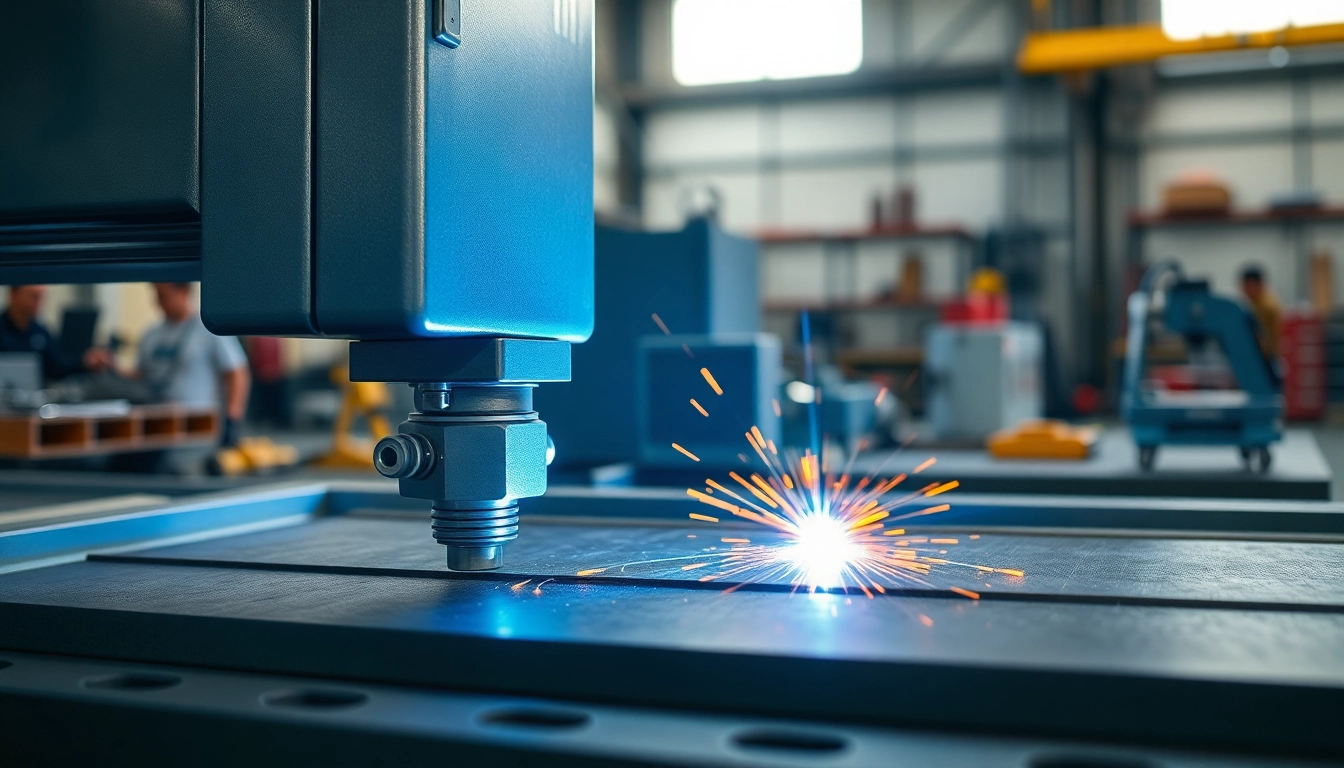
Understanding the Basics of Laser Welding Machine
Introduction to Laser Welding Technology
Laser welding has emerged as a transformative technology in modern manufacturing, recognized for its precision, speed, and efficiency. Using focused light energy, Laser welding machine enables the joining of materials in ways that traditional welding methods cannot achieve. By directing a concentrated laser beam onto the materials to be welded, often metals or thermoplastics, this technology provides a high level of control over the welding process and produces strong, durable joints with minimal thermal distortion. Understanding the principles behind this technology is crucial for engineers and manufacturers who seek to improve their welding operations and product outcomes.
Components of a Laser Welding Machine
A laser welding machine consists of several key components that work together to create solutions tailored to various manufacturing needs:
- Laser Source: The heart of the machine, typically using Nd:YAG (neodymium-doped yttrium aluminum garnet) or fiber lasers, responsible for generating the laser beam.
- Optical System: This includes lenses and mirrors that focus and direct the laser beam accurately onto the workpiece surface.
- Control System: A sophisticated interface that allows operators to configure parameters such as power, speed, and focal length, ensuring precise adjustments are made for each welding task.
- Cooling System: Important for maintaining optimal operational temperatures to prevent overheating of both the laser source and the workpieces.
- Workstation: The area where the workpieces are placed, often equipped with fixtures to hold the parts in position during the welding process.
Key Benefits of Using a Laser Welding Machine
The adoption of a laser welding machine leads to numerous advantages:
- Precision: Laser welding allows for exceptional accuracy, making it ideal for delicate or complex components.
- Speed: The rapid firing of the laser beam enables quicker operations compared to traditional methods, thus enhancing overall productivity.
- Reduced Heat Affected Zone (HAZ): The focused beam minimizes the heat transferred to surrounding areas, reducing distortion and improving the quality of welds.
- Versatility: This technology can be used on a variety of materials, including metals and plastics, and is adaptable to both thin and thick sections.
- Automation Potential: The integration of robotic systems can further enhance efficiency, consistency, and safety in manufacturing environments.
Applications of Laser Welding Machine in Various Industries
Manufacturing and Automotive Applications
The manufacturing sector heavily utilizes laser welding machines, particularly within the automotive industry. Components such as car frames, body panels, and intricate parts are often welded together using laser technology due to the need for high precision and the reduction of weight in vehicles for fuel efficiency. Laser welding is essential for both traditional and electric vehicles, allowing for the creation of lightweight structures that maintain structural integrity.
Aerospace and Medical Device Applications
In the aerospace industry, laser welding plays a critical role in constructing aircraft components, ensuring that they meet stringent safety and performance standards. The ability to weld dissimilar materials, like combining aluminum and steel, enhances the design and functionality of aircraft. Similarly, in the medical device sector, laser welding enables the assembly of critical devices such as surgical instruments and implants, where precision and hygiene are paramount.
Construction and Electronics Industries
Laser welding has also found applications in the construction industry, particularly in metalworking, where it can form robust joints in structural components that need to withstand significant loads. On the other hand, the electronics sector uses laser welding for connecting components within circuit boards or assembling devices while minimizing the risk of thermal damage to sensitive parts.
Choosing the Right Laser Welding Machine
Factors to Consider When Selecting a Laser Welding Machine
When choosing a laser welding machine, several factors must be considered:
- Material Type: Different laser machines are suited to various materials. Evaluate the types of metals or plastics that will be welded to ensure compatibility.
- Welding Thickness: Consider the thickness of the materials; some machines are better equipped to handle thicker materials, while others are optimized for thin sheet metal.
- Welding Speed: Determine the required speed of operation based on your production needs; faster machines may lead to higher output.
- Precision and Control: Assess the machine’s ability to adjust parameters accurately. High precision is vital for intricate designs or delicate materials.
Common Types of Laser Welding Machines
There are several types of laser welding machines available, each with specific advantages:
- Fiber Laser Welding Machines: Known for rapid welding speeds and high efficiency, they are excellent for a variety of metals.
- CO2 Laser Welding Machines: These are versatile and can weld both metallic and non-metallic materials, although they typically require more maintenance.
- Nd:YAG Laser Welding Machines: These machines offer high peak power and are especially suitable for thick materials.
Budget Considerations for Your Laser Welding Machine
Investing in a laser welding machine can be significant, and it is crucial to balance cost with the desired capabilities. The initial purchase price, operational costs, and potential for increased efficiency should be factored into the decision-making process. Additionally, consider long-term costs associated with maintenance and potential upgrades. An analysis of total cost of ownership (TCO) can provide insights into whether the benefits of advanced technology justify the initial investment.
Improving Efficiency with Laser Welding Machine Techniques
Best Practices for Operating a Laser Welding Machine
To maximize the efficacy of a laser welding machine, operators must adhere to best practices, which include:
- Regular Training: Ensure all operators are adequately trained on the specifics of the machine, including operational parameters and safety protocols.
- Parameter Optimization: Constantly review and adjust welding parameters for different materials and thicknesses for optimal results.
- Process Monitoring: Employ real-time monitoring tools to assess the quality of welds and make adjustments as necessary.
Common Challenges in Laser Welding and Solutions
Despite its advantages, laser welding can present challenges, including:
- Material Reflection: Highly reflective materials can cause scattering of the laser beam. Solutions include using anti-reflective coatings or adjusting the laser’s focus and intensity.
- Thermal Distortion: Excessive heat can lead to deformation. Implementing techniques such as pulse modulation can help mitigate this challenge.
- Porosity and Incomplete Penetration: These issues can arise from inadequate settings. Regular calibration and process adjustments are necessary for consistent results.
Regular Maintenance Tips for Longevity
To extend the lifespan of a laser welding machine, regular maintenance is essential. This includes:
- Cleaning Optical Components: Regularly clean lenses and mirrors to maintain laser beam quality.
- Checking Alignment: Ensure that the optical system is correctly aligned to avoid operating inefficiencies.
- Routine Calibrations: Schedule periodic calibrations to ensure the machine operates within manufacturer specifications.
Future Trends in Laser Welding Machine Technology
Innovations in Laser Welding Techniques
The future of laser welding technology promises innovative advances that will further enhance efficiency and effectiveness. For instance, developments in laser beam shaping and modulation techniques are paving the way for more complex joint geometries and better control over heat input—critical factors in achieving superior weld quality. Additionally, advancements in intelligent systems for real-time process adjustments could revolutionize how operators manage laser welding tasks.
The Impact of Automation on Laser Welding Processes
As automation in manufacturing becomes increasingly prevalent, integrating laser welding machines with robotic systems is essential for improving productivity and consistency. These automated systems can perform multiple welding operations with minimal human intervention, significantly reducing labor costs and enhancing precision. This trend towards automation is set to redefine manufacturing workflows, making laser welding a more integral part of production lines.
Environmental Sustainability and Laser Welding
In an era of heightened awareness regarding sustainability, manufacturers are exploring the environmental impact of laser welding. Compared to traditional methods, laser welding tends to generate less waste and consumes less energy. Future trends may even focus on further reducing the carbon footprint associated with welding processes by employing renewable energy sources to power laser welding operations and developing more sustainable materials that facilitate eco-friendly manufacturing practices.






